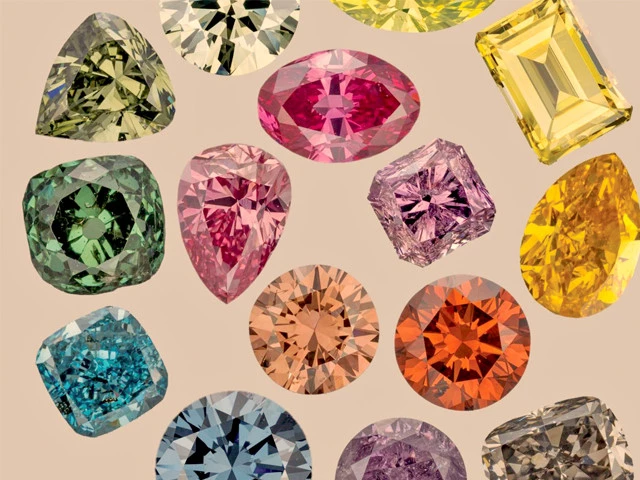Some diamonds are not forever
A market flooded with synthetics pushes the world's tastemakers back toward rarity and heritage

The discourse around diamonds this year has taken an unusual turn: after a period of acclaim and ascendancy for lab-grown gems, industry heavy-weights are now sounding alarms and celebrities are flashing predominantly natural stones in high-visibility moments.
The theme? "Some diamonds are not forever." At the heart of the matter is a stark assessment from World Diamond Council President Feriel?Zerouki.
Speaking during a mining conference in Luanda, she declared that lab-grown diamonds were losing appeal because of oversupply and collapsing wholesale prices. "If you look at the latest trends, lab-grown diamond prices are crashing. This is impacting consumer confidence."
Her warning follows data showing that wholesale values of one- and two-carat lab-grown diamonds have fallen by as much as 96% since 2018. That kind of drop is seismic in the jewellery business.
The warning from Zerouki is that unless the natural diamond sector invests in marketing initiatives like the Luanda Accord - a fund dedicated to promoting mined gems among producer countries - the lab-grown bubble may simply remain a cheaper "fashion accessory" rather than a serious bridal gemstone.
Amid this backdrop of industrial retrenchment, the celebrity diamond moment is flashing louder than ever. Take Taylor?Swift: in August she revealed an engagement ring that reverberated across fine-jewellery commentary.
The bespoke piece features an antique old-mine brilliant-cut diamond set in yellow gold, designed by Kindred?Lubeck of Artifex Fine Jewellery. While exact carat weight varies by source, many estimate it at around 7-10 carats, with a value well into the hundreds of thousands of dollars.
Meanwhile, at the recent Paris?Fashion?Week Fall 2025 runway for Balenciaga, Kim?Kardashian returned to the catwalk in dramatic style, wearing over 250 carats of diamond jewellery – including earrings once owned by Elizabeth?Taylor and two dazzling diamond necklaces.
What this signals is a moment of convergence: the natural diamond industry marking its moment of reassertion, and high-profile personalities illustrating exactly how jewellery of substance still carries both style and narrative heft. Taylor's ring draws from heritage cuts that pre-date computer-aided precision, while Kim's runway moment recalls Hollywood old-guard glamour.
Yet the underpinning message remains: mined diamonds are asserting their uniqueness in a world where lab-grown versions face market saturation and perceptual de-valuation. Zerouki's statement is candid: the shift isn't automatic.
A rebound in natural-diamond demand must be supported by marketing and structural initiatives. Without these, the pendulum may swing back and forth - but with a one-time leg-up for mined stones, until novelty gives way to equilibrium.
Consider the implications for consumers. The journalistic coverage on Taylor's ring emphasises that "true old-mine diamonds can be harder to source," which means that replicating her look may be far more difficult (and expensive) than acquiring a lab-grown equivalent.
In other words: the inflated carats-for-price definition of sparkle is being recalibrated in favour of narrative authenticity - why the stone was cut, the band's provenance, and the brand behind the design now matter more than ever.
On the luxury-runway front, the spectacle of Kim Kardashian's diamonds is not just about carats. The jewellery pieces she wore - earrings once owned by Elizabeth Taylor, stacked necklaces, opulent stones - come loaded with meaning.
It's also worth noting the geographical and industrial dimensions. The lab-grown boom, particularly in China and India, flooded supply chains, pushing down wholesale values and weakening the perceived prestige of synthetic stones.
With prices falling dramatically, the very category that once seemed democratising diamonds is now seen by some as vulnerable to commoditisation. By contrast, the mined diamond sector is doubling down on distinctiveness.
The Luanda Accord mechanism commits producer nations such as Angola, Botswana, Namibia and South Africa to allocate 1 per cent of annual sales revenue to a marketing fund - a collective effort to reclaim cultural and economic ground.
For the everyday consumer walking into a jewellery store or watching red-carpet jewellery flashbulbs, this means one clear takeaway: the phrase "some diamonds are not forever" encapsulates both a clever play on the old adage and a real shift in mindset.
Synthetic stones may be very lovely, but when market confidence falters and the narrative around them shifts, their perceived value can dent. Meanwhile, mined diamonds are leaning into their rarity and story to anchor value anew.
In the glittering world of celebrity jewellery, this narrative is being played out in overt and red-carpet terms. Swift's heirloom-inspired diamond engagement ring could well spur demand for vintage cuts and yellow gold settings in the 2026 jewellery cycle.
At the same time, Kim Kardashian's runway jewellery underlines that the highest echelon of luxury still buys into heritage, provenance and spectacle. In a market where glint alone no longer guarantees prestige, the message to designers, retailers and consumers is clear: sparkle without story may not hold for long.
The brilliance of a diamond increasingly lies in what it means, not only in how it dazzles. And for now, that places natural stones - and the narratives behind them - in the spotlight.




















COMMENTS
Comments are moderated and generally will be posted if they are on-topic and not abusive.
For more information, please see our Comments FAQ